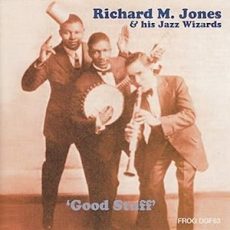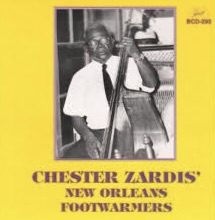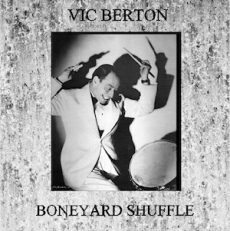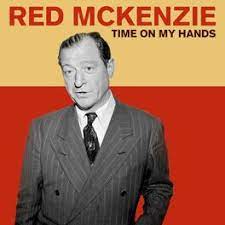
Daily Dose Of Jazz…
Richard M. Jones, born Richard Marigny Jones on June 13, 1892 in Donaldsonville, Louisiana and grew up in New Orleans, Louisiana. Suffering from a stiff leg he walked with a limp, causing fellow musicians to give him the nickname “Richard My Knee Jones” as a pun on his middle name. In his youth he played alto horn in brass bands. His main instrument, however, became the piano and by 1908 he was playing in Storyville, the red-light district of New Orleans. A few years later, he often led a small band which sometimes included Joe Oliver and also worked in the bands of John Robichaux, Armand J. Piron, and Papa Celestin.
In 1918, Jones moved to Chicago, Illinois where he worked as Chicago manager for publisher and pianist Clarence Williams. Jones began recording in 1923, making gramophone records as a piano soloist, accompanist to vocalists, and with his bands The Jazz Wizards and The Chicago Cosmopolitans. He recorded for Gennett, OKeh, Victor, and Paramount record labels in the 1920s.
He also worked for OKeh Records as supervisor of the company’s “Race” Records for most of the decade, separately the Caucasian artists from the Black. During this period he was the producer of Louis Armstrong’s influential Hot Five and Hot Seven recordings. In the 1930s, Jones performed a similar management role for Decca.
Pianist, composer, band leader, and record producer Richard M. Jones, sometimes written Richard Mariney Jones and who had numerous songs bearing his name as author, including Trouble in Mind and worked for Mercury Records until his death on December 8, 1945 in Chicago, at the age of 53.

Daily Dose Of Jazz…
Chester Zardis was born on May 27, 1900, in New Orleans, Louisiana and played bass from a young age, studying without his disapproving mother’s knowledge under Billy Marrero of the Superior Orchestra. In his teens he was sent to the Jones Waif Home where he began playing with another of the Home’s residents, Louis Armstrong.
He joined Buddy Petit’s orchestra at age 16, and worked as a bassist in nightclubs and a tubist in brass bands in 1920s New Orleans. There he played with Kid Rena, A.J. Piron, Punch Miller, Kid Howard, Jack Carey, Fate Marable, and Duke Dejan’s Dixie Rhythm Band.
He was given the nickname “Little Bear” by riverboat bandleader Fats Pichon, a bandleader with whom Zardis played in the 1930s. During that decade he also played with Count Basie in New York City, and recorded with George Lewis and Bunk Johnson. During World War II he served in the Army, then worked briefly as a sheriff. Upon his return to New Orleans, he played with Andy Anderson, but quit music between 1954 and 1964.
When he returned to active performance, Chester played often at Preservation Hall with Lewis and Percy Humphrey among many others. He continued to be a fixture of the New Orleans jazz scene up until his death in 1990, including several international tours.
Double bassist Chester Zardis, who was regularly featured in documentaries including Liberty Street Blues, Chester Zardis: Spirit of New Orleans, and Three Men of Jazz, died on August 14, 1990 in New Orleans.
More Posts: bass,history,instrumental,music

Daily Dose Of Jazz…
Vic Berton was born Victor Cohen on May 7, 1896 in Chicago, Illinois. His father was a violinist who began his son on string instruments around age five. He was hired as a percussionist at the Alhambra Theater in Milwaukee, Wisconsin in 1903 when he was only seven years old. By 16, he was playing with the Milwaukee Symphony Orchestra and the Chicago Symphony Orchestra. While serving in World War I he played drums for John Philip Sousa’s Navy band.
In the early 1920s, Berton played in the Chicago bands of Art Kahn, Paul Beise, and Arnold Johnson. He led his own ensemble which played at the Merry Gardens club. 1924 saw him become the manager of The Wolverines, and occasionally played alongside Bix Beiderbecke in the ensemble. Later in the decade, he played with Roger Wolfe Kahn, Don Voorhees, Red Nichols and Paul Whiteman. He worked extensively as a session musicianbefore moving to Los Angeles, California in 1927.
During his time in Los Angeles he played with Abe Lyman and recorded in studios for film soundtracks. Vic served as director of Paramount Films’s music division for a period and worked in the Los Angeles Philharmonic Orchestra. In the 1940s, he worked as a percussionist in the studios for 20th Century Fox.
Drummer Vic Berton died on December 26, 1951 in Hollywood, California from lung cancer.
More Posts: bandleader,drums,history,instrumental,jazz,music

Daily Dose Of Jazz…
Minor Hall was born in Sellers, Louisiana on March 2, 1897 and was the younger brother of Tubby Hall. He studied at New Orleans University until 1914, then began playing with Kid Ory in the middle of the decade. He played in various New Orleans ensembles, including the Superior Band, then moved to Chicago, Illinois in 1918. He briefly took his brother’s spot in Lawrence Duhe’s band before serving in the U.S. Army during World War I. By the time he returned, King Oliver was leading Duhe’s band, which Hall rejoined in 1921.
In 1926 he played with Jimmie Noone, then moved to California for an extended run with Mutt Carey’s Jeffersonians from 1927 to 1932. He played in the Winslow Allen Band during the Thirties, but took a hiatus from music for part of the decade. He served briefly in the Army again in 1942.
In 1945 he rejoined Ory in his Creole Jazz Band, becoming one of his most long standing members. He remained with Ory’s ensemble until 1956, when he retired on account of poor health, having never led his own recording date, though he recorded extensively with Ory and with Louis Armstrong in the 1940s.
Drummer Minor Hall, better known as Ram Hall, died in Sawtelle, California at the age of 61 on October 16, 1959.
More Posts: drums,history,instrumental,jazz,music

Daily Dose Of Jazz…
William ‘Red’ McKenzie was born on October 14, 1899 in St. Louis, Missouri. In 1923, he founded the Mound City Blue Blowers with Jack Bland and Dick Slevin. Later they were joined by guitarist Eddie Lang. The quartet also used the name Red McKenzie and the Candy Kids.
In 1929, the Blue Blowers recorded the songs One Hour and Hello Lola with Glenn Miller, Pee Wee Russell and Coleman Hawkins. They also recorded with Bunny Berigan, Jimmy Dorsey, and Muggsy Spanier. McKenzie sang with the Paul Whiteman orchestra and in the 1930s led the Spirits of Rhythm and the Farley-Riley band.
In 1931, he sang on Time on My Hands, Just Friends, and I’m Sorry Dear. McKenzie played in the Town Hall concerts of Eddie Condon, but retired in the 1940s.
On February 7, 1948 jazz vocalist and musician Red McKenzie, who played a comb-and-paper as an instrument, transitioned in New York City.
More Posts: comb & paper,history,instrumental,jazz,music,vocal





